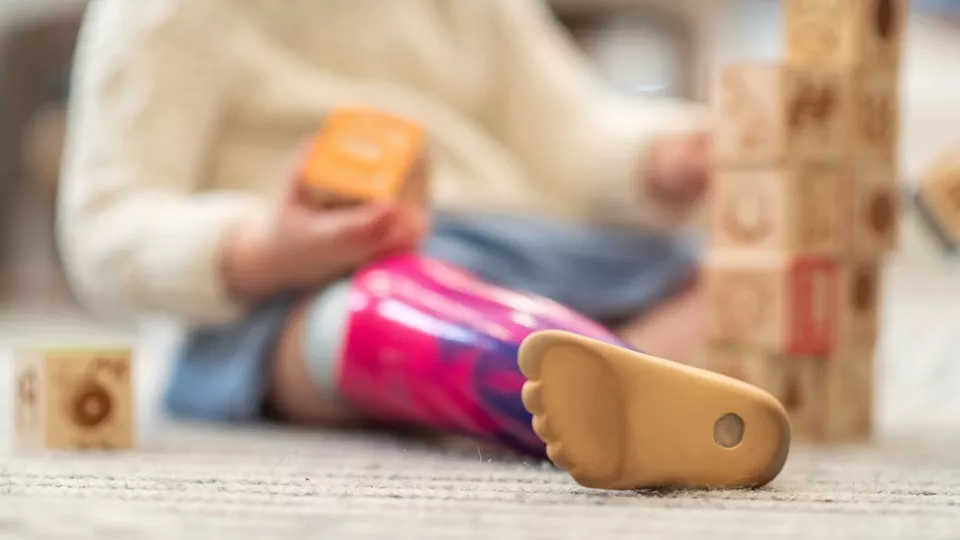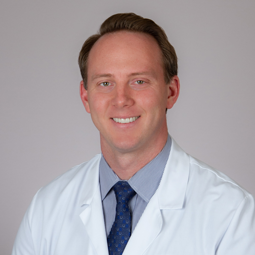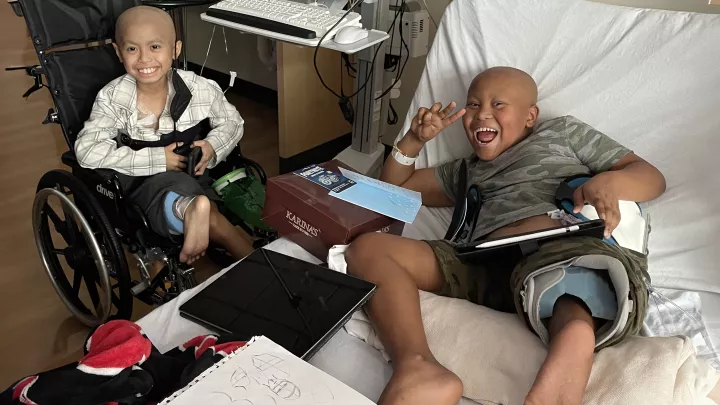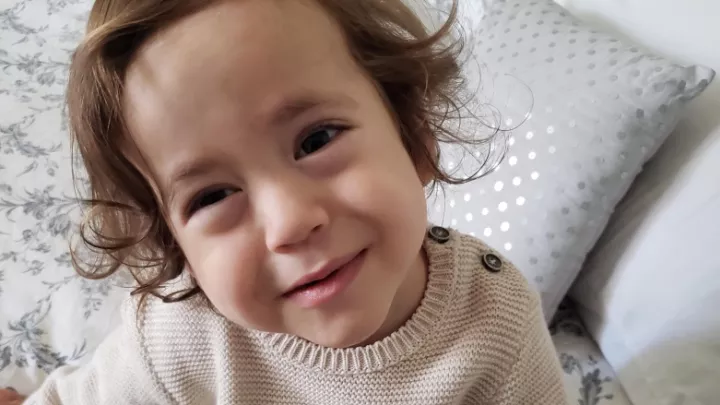
A Surgical Rarity: Two Rotationplasty Procedures in One Month
Many pediatric orthopedic surgeons go their entire careers without performing a rotationplasty—a specialized surgery to remove bone tumors near the knee in children. But at Children’s Hospital Los Angeles, Alexander Christ, MD, recently performed two of these surgeries in the same month.
Both patients were 9-year-old boys with osteosarcoma. Dr. Christ, an orthopedic oncologist in the Jackie and Gene Autry Orthopedic Center—home to one of the largest programs in the nation for children with bone and soft tissue tumors—shares his experience with these December procedures, including how the team approached a 35-centimeter tumor that had invaded the femoral vein.
How rare is rotationplasty?
It’s pretty unusual. As an example, Vern Tolo, MD, who is our Chair Emeritus of Orthopedic Surgery, has done 11 of these in 50 years. My mentor at Memorial Sloan-Kettering Cancer Center, where I did my subspecialty training, performed four over 37 years. So it’s definitely unusual to do two of these in the same month.
The group of children who are candidates for this procedure is small. But also, many families don’t want to do it because of the appearance. In rotationplasty, you’re removing the affected bone, including the knee. You then rotate the remaining tibia 180 degrees and reattach it—so the ankle becomes the knee joint, and you can fit a prosthesis to it. But the foot then faces the opposite direction on that side, which you can see when the prosthesis is off. That can be difficult for parents to accept.
Why was rotationplasty the best approach for these patients?

The first patient’s tumor was extremely large—35 centimeters in length, encompassing nearly the entire femur. If you were going to reconstruct that with an implant, you’d have to do a total femur replacement, which has a high complication rate and leads to very low function. In addition, he would have required a number of additional surgeries before he was 16, just to keep lengthening the leg.
The second patient had a 15-centimeter tumor, but it took up over half of his femur. The big issue for him was that he has a lot of growth left. With other options, he would have been looking at probably 10 more surgeries before he was 16, and then more throughout his life as the implants wear out.
With rotationplasty, you don’t need additional surgeries, and you don’t have an implant that wears out. It’s your own body; it heals. And the limb is much more functional. You can run, jump, play sports—there are kids with rotationplasty who play baseball, soccer, swim and go rock climbing. Both of these kids are active boys, so that was important.
How did you prepare?
One of the biggest things before the surgeries was calculating the expected leg length once each child reached maturity. After a rotationplasty, the child has growth plates for each leg that will grow at very different paces.
When the patients are adults, you want them to be able to sit comfortably in a chair, car, airplane—all the typical places. When the full-grown patient is sitting, the end of the knee should be at about the same level as the back of the heel on the other side.
No one can perfectly predict growth, but you want to try to get to at least within 2 centimeters. So it’s critical to go through the calculations very carefully. Dr. Tolo and I went through them together to ensure the best possible result.
Did any specific surgical challenges come up?
The first patient’s surgery was much longer—close to seven hours—and more complex. In that case, the femoral vein was involved with tumor. We knew going in that this was a possibility; it was very close on imaging. But it’s unusual for osteosarcoma to invade the vessels. Typically, even when it looks close on imaging, you can safely dissect the vessels free. But not in this case.
So that added extra complexity to that first surgery. We had to remove part of the femoral vein, which then required specialized vascular reconstruction. My colleague, Erin Meisel, MD, who is a hand and microvascular surgeon here, came in and expertly reattached the vessels.
Without an experienced microvascular surgeon on hand, we couldn’t have done a rotationplasty. We would have had to amputate. So her contribution was significant.
How did the patients do after surgery?
Really well. They both flew through the immediate postoperative course, although the first patient needed to have a second operation for an area of skin that hadn’t healed well. His surgery was much bigger.
They both are in the process of getting their prosthetics fitted, and then they will need physical therapy to start learning how to walk with it. It’s a long process. But so far they’ve done great. I’m always amazed by kids and how resilient they are.
What makes Children’s Hospital Los Angeles well-positioned to offer a rare surgery like rotationplasty?
It’s really important that a complex procedure like this be done at a big center like CHLA, where you have all the different disciplines working together to make it happen safely.
You need expertise from so many different areas—pediatric oncology, orthopedics, microvascular surgery, nursing, child life, psychology, physical therapy and more. This is not me doing something by myself. It’s a multidisciplinary team effort, and that’s the key to ensuring the best outcomes for patients.


